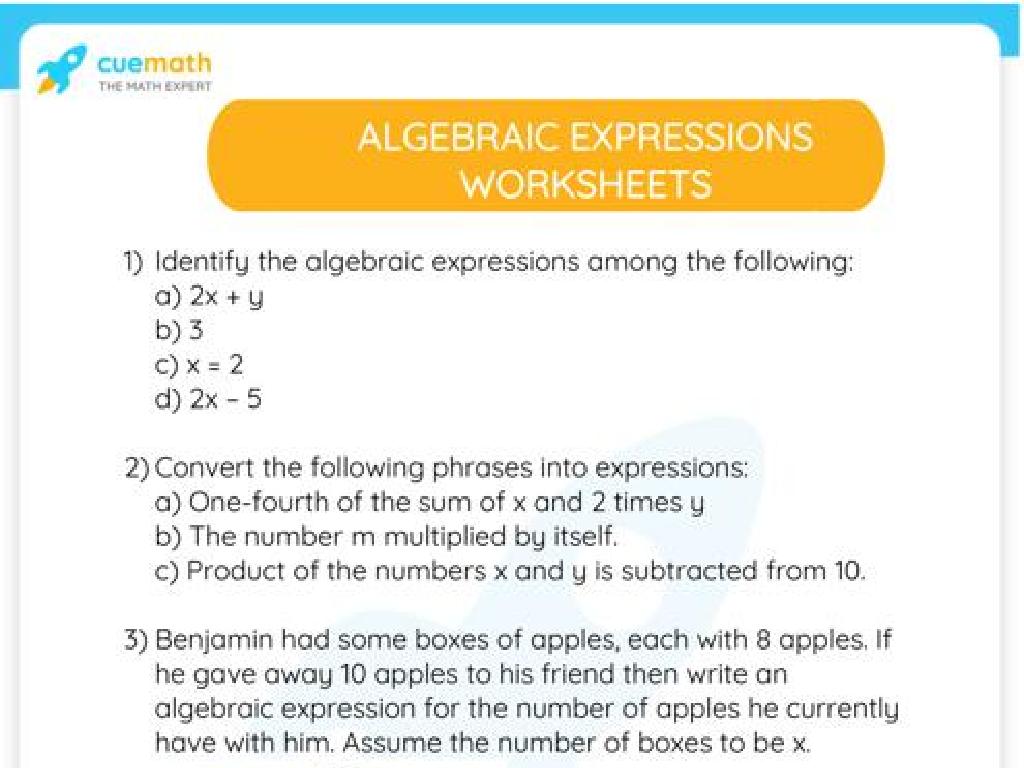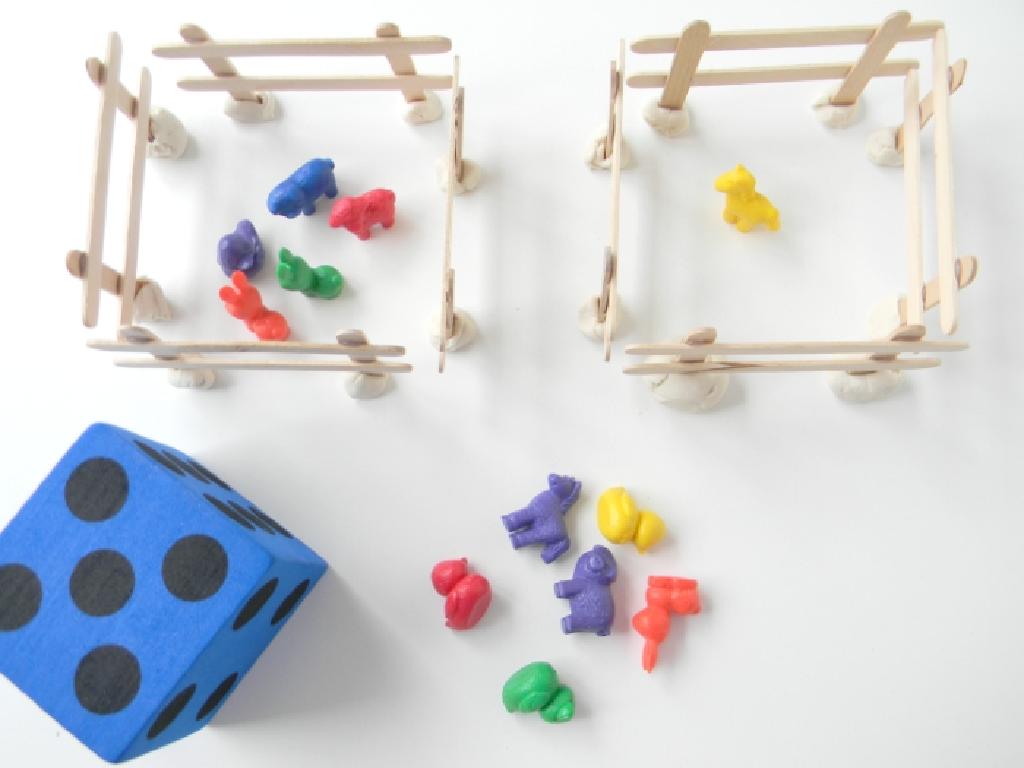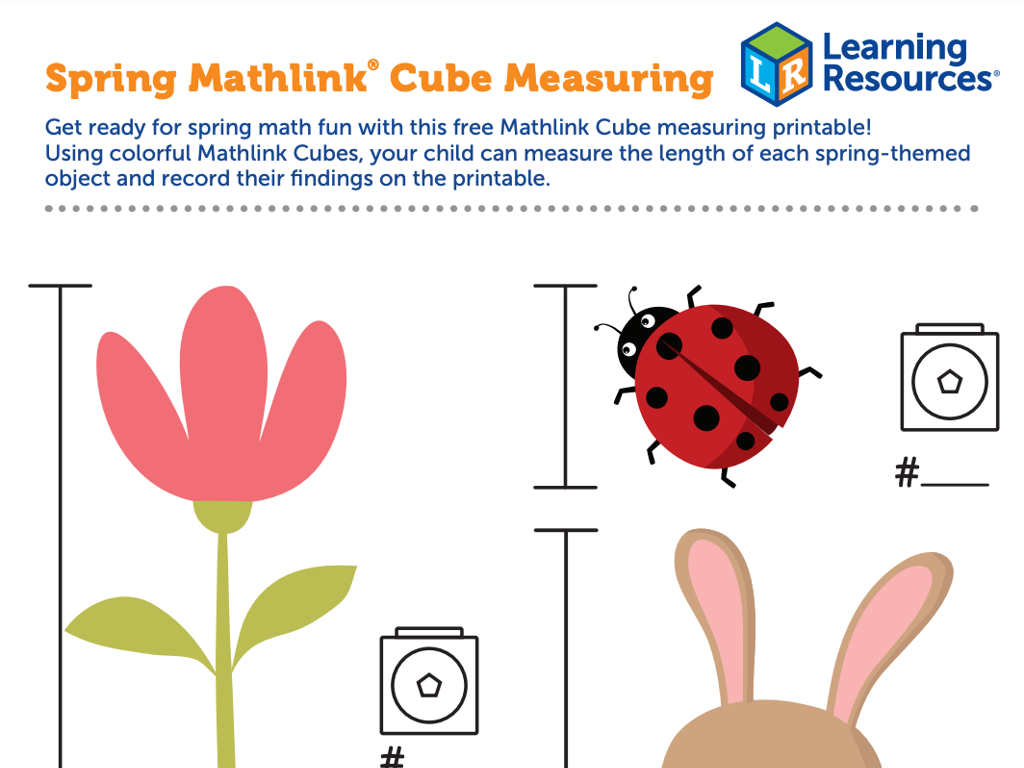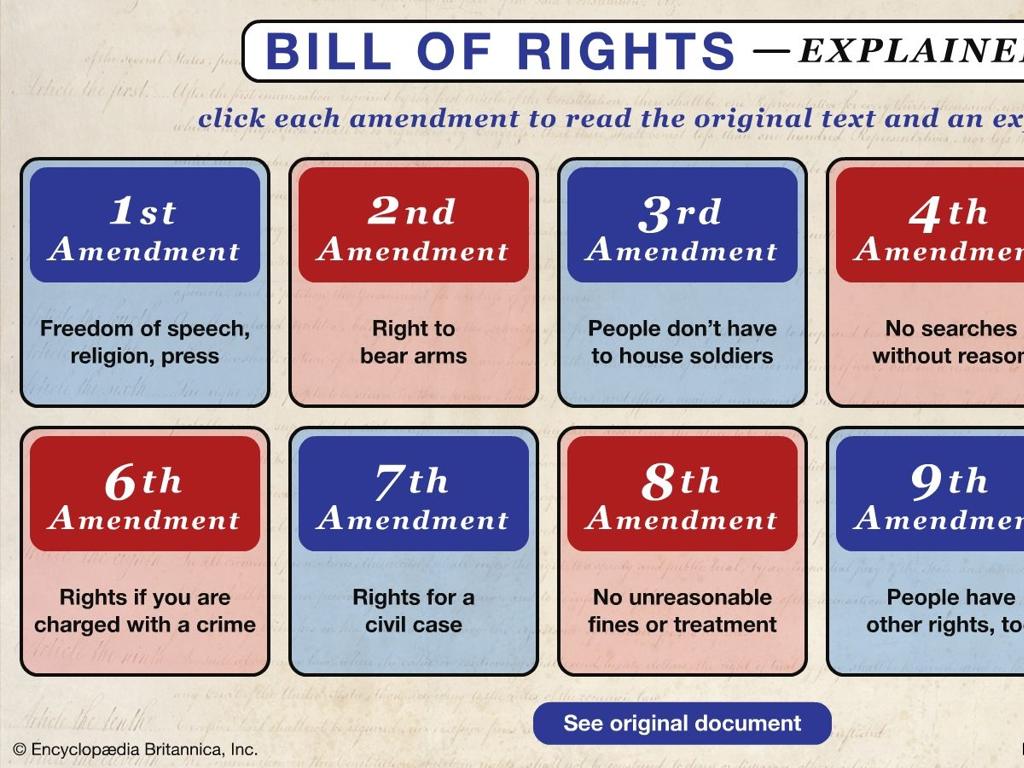Use Academic Vocabulary In Context
Subject: Language arts
Grade: Fifth grade
Topic: Context Clues
Please LOG IN to download the presentation. Access is available to registered users only.
View More Content
Welcome to Context Clues: Word Detectives!
– Embark on a word detective adventure
– Uncover the mission: What are context clues?
– Clues in the text that help us define unfamiliar words
– Discover why context clues are crucial
– They help us understand new vocabulary without a dictionary
– Apply context clues to reading and writing
– Using context clues improves comprehension and enriches expression
|
In this lesson, students will become ‘word detectives’ and learn how to use context clues to uncover the meanings of unfamiliar words. Begin by explaining that context clues are hints found within a sentence or passage that can help determine the meaning of new or tricky words. Emphasize the importance of context clues in understanding new vocabulary and how they can be used to enhance both reading comprehension and writing skills. Encourage students to practice by identifying context clues in example sentences and explain how these clues can point to the correct meaning of the words. This foundational skill will aid them in becoming more independent readers and expressive writers.
Understanding Context Clues
– What are context clues?
– Clues in text that help guess words we don’t know
– Types of context clues
– Definition, synonym, antonym, example, inference
– Spotting clues in sentences
– Look for signal words or phrases around the tricky word
– Practice using context clues
– Find a word you don’t know and use clues to understand it
|
This slide introduces the concept of context clues to the students, which are hints or clues within a sentence or passage that help us figure out the meaning of unfamiliar words. Explain the different types of context clues: definitions provided in the sentence, synonyms and antonyms indicating similar or opposite words, examples that illustrate the word, and inferences that can be made from the overall context. Teach students to be detectives, looking for these clues around words they don’t know to infer meaning. Encourage them to practice this skill by reading and identifying new vocabulary using context clues. This foundational skill will enhance their reading comprehension and vocabulary acquisition.
Types of Context Clues
– Definition clues in sentences
– The new word is explained right there in the sentence.
– Synonym clues for understanding
– A word with a similar meaning helps you know the new word.
– Antonym clues provide contrast
– An opposite word is used to highlight the meaning of the new word.
– Example clues offer explanation
– Specific examples are used to clarify the new word’s meaning.
– Inference clues require guessing
– Sometimes, you deduce the meaning from the text around the new word.
|
This slide introduces students to the different types of context clues they can use to determine the meaning of unfamiliar words. Definition clues provide a direct explanation within the sentence. Synonym clues use similar words to help define the new word. Antonym clues use a word with the opposite meaning to give insight. Example clues give concrete illustrations that shed light on the word’s meaning. Inference clues challenge students to read between the lines and deduce the meaning from the surrounding text. Encourage students to practice identifying these clues in sentences and use them to expand their vocabulary.
Using Context Clues in Action
– Practice: Identify clues in sentences
– Look for words or phrases that give hints about the unknown word
– Group Activity: Work in pairs to find clues
– Collaborate to spot and discuss the context clues
– Share Discoveries with the class
– Each pair presents their findings, enhancing learning
– Understanding the importance of context
|
This slide is designed to engage students in a practical exercise on using context clues. Begin with a guided practice where students identify context clues within given sentences. Then, move on to a group activity where students work in pairs to find context clues in selected texts. This collaborative effort encourages discussion and critical thinking. After the activity, pairs will share their discoveries with the class, allowing for a collective learning experience. Emphasize the importance of context in understanding new vocabulary, and how it can help decipher the meaning of words without a dictionary. Provide detailed guidelines for the teacher to facilitate the activity, including examples of sentences for practice, tips on forming pairs, and how to effectively moderate the sharing session.
Mastering Academic Vocabulary
– Define Academic Vocabulary
– Specialized language used in academic settings
– Importance of Academic Vocabulary
– Helps to communicate complex ideas clearly and precisely
– Examples in sentences
– ‘Analyze’ in a sentence: We will analyze the text for themes.
– Practice using context clues
– Use surrounding text to determine word meanings
|
Academic vocabulary refers to the words that are commonly used in educational and professional settings. These words are essential for students to understand and use in order to grasp complex concepts and engage in higher-level thinking. The importance of academic vocabulary lies in its ability to help students articulate their thoughts clearly and engage with material at a deeper level. By providing examples, such as using the word ‘analyze’ in a sentence, students can see how these words function in context. Encourage students to look for clues in the text around unfamiliar words to infer their meanings. This slide aims to introduce the concept of academic vocabulary and its significance, while also giving students the opportunity to see and practice using these words in context.
Practice Time: Context Clues
– Individual activity: Fill in the blanks
– Use context clues for vocabulary
– Look for hints in the sentence to find the right word
– Be ready to explain your word choices
– Share why you chose each word
– Enhance your word detective skills
|
This slide introduces an individual activity designed to reinforce the concept of using context clues to determine the meaning of academic vocabulary. Students will be given sentences with blanks that they must fill in using the correct word based on context clues within the text. After completing the activity, students should be prepared to explain the reasoning behind their word choices, which encourages critical thinking and comprehension. For the teacher: Prepare a worksheet with sentences featuring academic vocabulary. Ensure the context clues are clear enough for fifth graders to infer meaning. During the next class, facilitate a discussion where students share their answers and reasoning, fostering a collaborative learning environment.
Class Activity: Context Clue Challenge
– Engage in ‘Context Clue Challenge’ game
– Use context clues for new words
– Look for hints in the sentence around the new word
– Earn word cards for correct answers
– Each correct use of a clue earns you a word card
– Aim to collect the most word cards
– The student with the most cards wins
|
This interactive class activity is designed to help students practice using context clues to determine the meaning of new vocabulary. Set up the game by preparing word cards with sentences that include new, challenging words. Students will use hints from surrounding text definitions, synonyms, antonyms, examples to infer the meaning of each word. When a student correctly uses context clues, they receive the corresponding word card. The goal is to collect as many word cards as possible. For the teacher: Prepare a diverse set of sentences with varying context clues, ensure clear explanations are available for each new word, and consider offering small rewards for participation and success to motivate the students.
Wrapping Up: Context Clues
– Recap on Context Clues
– We learned how to find hints around unfamiliar words to understand them.
– Discussing Context Clues usage
– Share how context clues can help in understanding stories and writing better.
– Homework: Discover 5 new words
– Use a book or any reading material to find new words and their meanings.
– Reflect on today’s learning
|
As we conclude today’s lesson, it’s important to review the key points about context clues. Encourage students to reflect on how context clues can aid in comprehension and enhance their writing. For homework, students should find five new words from any reading material at home and write down the clues that helped them understand the words. In the next class, be prepared to discuss these words and the context clues that were used. This exercise will reinforce their learning and show them the practical application of context clues in everyday reading.





